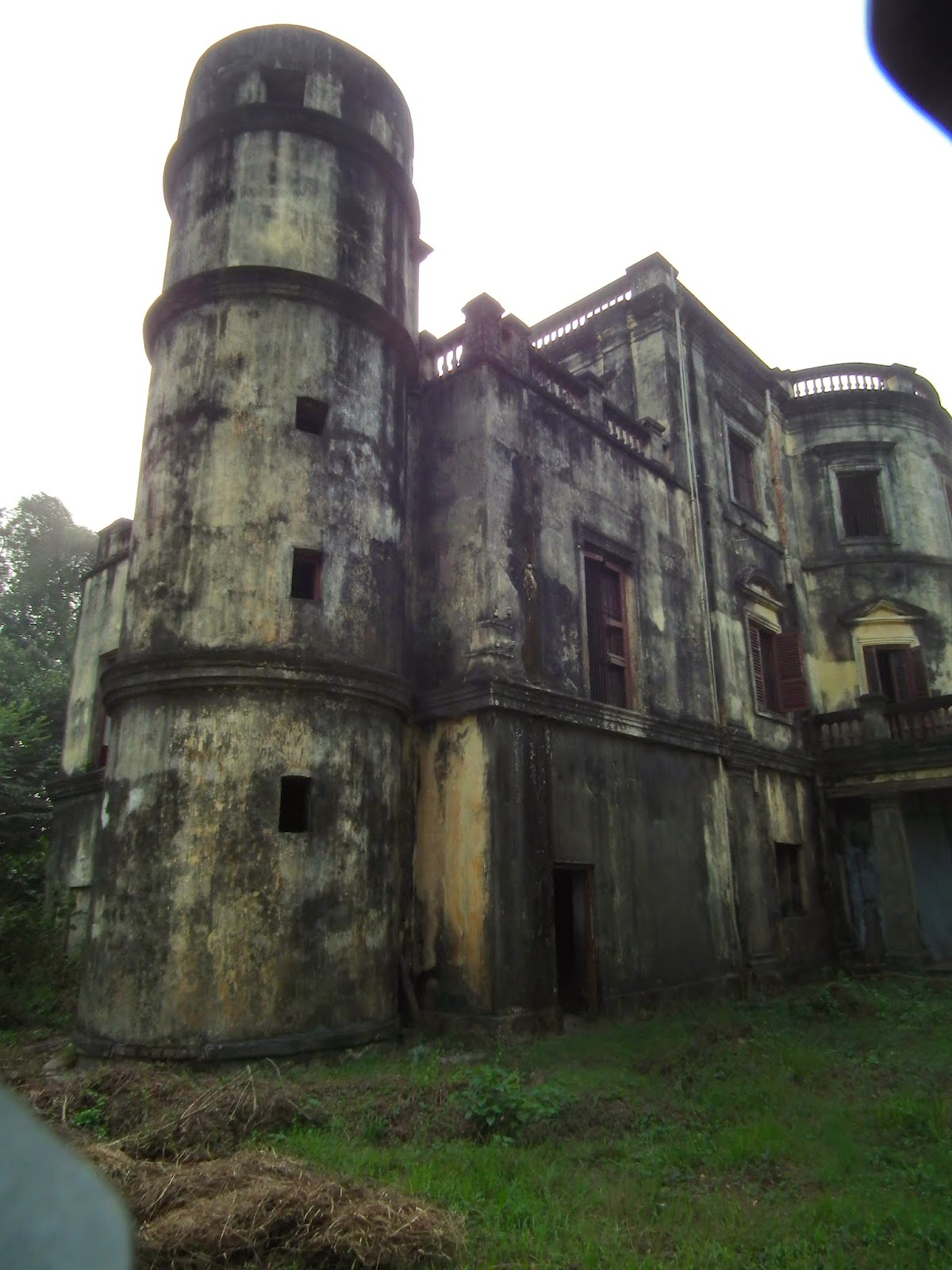The dilapidated Roxburgh Building and the herbarium (storehouse
of dried plant), that boasted one of the richest collection of plant specimens
anywhere, and the library in front of it in a restricted area of the Indian
Botanic Garden in Shibpur, which went to ruin after they were abandoned in the
1970s, but unless urgent measures are taken to restore both the heritage
buildings will fall to pieces.
The sprawling garden on the banks of the Hoogly
opposite Metiabruz was founded by Colonel Robert Kid in 1787, and William
Roxburgh was its first salaried superintendent between 1793-1814. The building
named after him was constructed around1794, and although initially it served as
Roxburgh’s residence, he subsequently constructed a plant house and the library
in the dilapidated house opposite it. Roxburgh was a pioneer in botanical
studies in India and he has written “Flora Indica”, once the bible for
botanists studying Indian flora.
Little is known about the early life of Robert Kyd.
He was born at Forfarshire may have studied medicine at Edinburgh. He joined
the Bengal Engineers as an ensign in 1764. He become a lieutenant a year later,
a captain on 3rd April,1768 major on 29th May,1780, and
lieutenant-colonel by 7th December ,1782. He was then made a
Secretary to the Military Department of inspection in Bengal and continued in
that post until his death.
Kyd was interested in horticulture and owned a
private garden in Shalimar near Howrah. He proposed the idea of a botanic
garden to the then Governor General Sir John Macpherson, who passed on the idea
to the Court of Directors of the East India Company. His idea was that it
should help in finding alternate sources of food to prevent famines and to
identify plants that might be commercially useful. The plan was approved on 31st
July 1787 and Kyd was made an honorary Superintendent. Kyd made a request in
his will that he be buried without any religious ceremony in the botanical
garden that he founded, but was instead in South Park Street cemetery.
Much development in Botany took place during British
Empire in India. Linnean system of “Binomial nomenclature” was introduced only
in 1778 by the natural historian engaged with the British East India Company.
During this period, botanical gardens were being founded in every significant
city in India to study the natural history of plants. Many botanists and
surveyors were recruited by East India Company to report and record Indian
flora. One such botanist of this period and the founding father of Indian
botany by his contemporaries was William Roxburgh.
William Roxburgh was born on June 29th
1751. He matriculated at Edinburgh University in 1771-72 to study surgery under
Dr. Alexender Monro. Further he was also the student of Dr. John Hope,
professor of botany and “Materia-medica” .John Hope was the curator of the
Edinburgh botanical garden as well an experimental physiologist. Roxburgh
reached Chennai in 1776 as an assistant surgeon in the East India Company’s
Madras General Hospital. At Chennai he turned his attention to botany. For the
period 1776-1793 he worked at Coromandel Coast, during this period he also met
Johann Gerhard Konig (who introduced binomial nomenclature in India). In 1789
he was appointed as natural historian of East India Company.
He moved to Kolkata to be the superintendent of the Botanic Garden, the present Indian Botanical Garden at Shibpur, Howrah. He was instrumental in introducing many plant and species to India and simultaneously he sent many species to Kew, London. His voluminous work, “Flora Indica” was published after his death. Roxburgh left for England from Kolkata in 1813 at the age of 62 spending some 37 years in India. He died at Edinburgh in 1815.
Dr. William Roxburgh was a botanist who made immense
contribution to the study of Indian botany and is regarded as many as the father
of Indian botany. He was also interested in meteorological impacts on droughts
and famine, and therefore, recommended for food, tree plantation in the
countryside and in public land.
Dr. Tin Robinson in his PHD thesis mentioned abount a short review of the Calcutta Botanic Garden written in 1971 wherein it was mentioned, “William Roxburgh was one of the greatest botanists of his time, and during his term converted the garden in its character from its original economic purpose to the service of scientific botany.” He is often referred as “The father of Indian Botany”.
Sources :
1. “The Botanic Garden” by Dr. Anis Mukhopadhyay.
2. “The Bengal Obituary”, Publisher : W. Thacker & Co.
3. Wikipadia, Robert Kyd & William Roxburgh.
4. “Annals of Royal Botanic garden, Calcutta,” “preface” by George King.
5. “The European discovery of the Indian Flora”. By Desmond Ray,Oxford
University Press.
6. “Botanic Garden Heritage House by Sanjoy Mondal,The telegraph.29th
Sept,2008.
Reasearch - Santanu Roy.
Picture Courtesy - Sudip Ghosh.
Picture Courtesy - Sudip Ghosh.

















3 comments:
THis is a fantastic account with photographs. There is now renewed interest in the history of science in India- at least outside India. I am sure there will be some student who will benefit greatly from this site soon. At least we live in hope. Thank you for your wonderful work on preserving these memories, at least in photographs.
http://creative.sulekha.com/from-hortus-malabaricus-to-flora-indica-william-roxburgh-and-botany_638391_blog
http://creative.sulekha.com/william-roxburgh-and-indian-botany-plants-empire-and-trade_638392_blog
http://creative.sulekha.com/william-roxburgh-and-indian-botany-plants-empire-and-trade-from-samalkotta-to-calcutta-part-ii-from-samalkotta-to-calcutta_638393_b
I have posted these on William Roxburgh and found your wonderful post when searching for a good picture of his House
Thanks
Chanced upon this article while researching the Botanical Gardens. Very well written - kudos to you for this.
Do you have any updates about the restoration planned for the Roxburgh House and the Herbarium? I had read somewhere that the Univ. of Sussex was to be involved in helping the authorities to restore the buildings.
Post a Comment